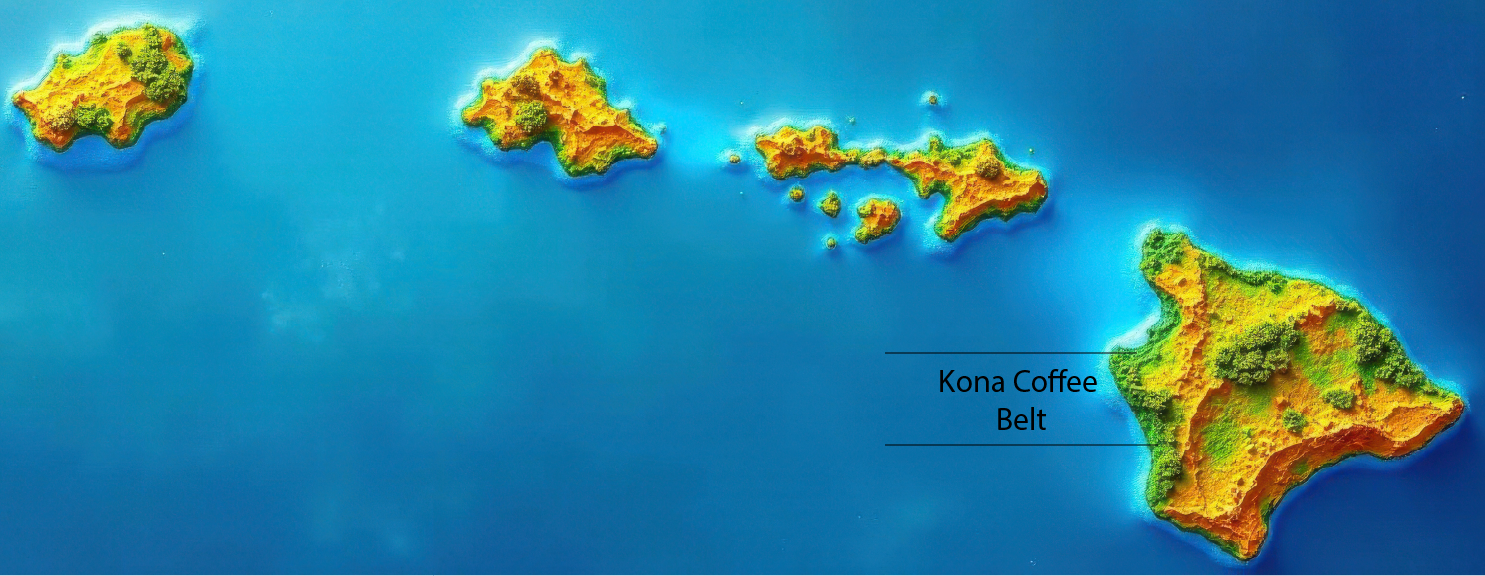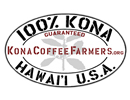There is some confusion regarding coffee labeling in Hawaii. While Kona grows the most prized coffee in Hawaii, coffee is grown in other regions in Hawaii. So, the short answer is that "Hawaiian Coffee" is not necessarily synonymous with "Kona Coffee," although most would agree that Kona Coffee is a type of Hawaiian Coffee.
Kona Coffee must be grown in the Kona Districts on the Big Island of Hawaii. The area is located on the leeward side of the island of Hawaii. It encompasses the North Kona and South Kona Districts, starting at Kailua-Kona in the North and extending approximately 20 miles south. Most coffee is grown at elevations ranging from about 500 to 3,500 feet.
On Hawaii Island, coffee is also grown in the Ka'u District and, more recently, the Puna District, though the output from these areas is limited. Coffee grown in these areas can be referred to as Ka'u Coffee, Puna Coffee, or Hawaiian Coffee.
Coffee is also grown on the islands of Maui, Molokai, Oahu, and Kauai. These can be labelled as such, or as the quality is often lower, they are blended and marketed as Hawaiian Coffee.
What about blends?
Be cautious when purchasing Kona Coffee, especially Hawaiian Coffee, as it may be a blend with as little as 10% actual coffee from that region. Indeed, these blends have little discernible taste from the area. Often sold in big box stores in the souvenir section or tourist shops, these blends are low-cost (and low-quality) coffees riding the coattails of pure Kona Coffee. Bags made with a blend of Kona Coffee and other coffee should clearly label the percentage of Kona Coffee. Look carefully if you see very inexpensive "Kona Coffee" as it's likely a blend.
In summary, Kona Coffee is a type of Hawaiian Coffee, but not all Hawaiian Coffee is Kona Coffee. In practice, you will only find Kona Coffee in bags labeled "Hawaiian Coffee" as a blend. You will not experience the unique smoothness, low acidity, and taste profile of 100% Kona Coffee. Pure, 100% Kona Coffee will be labelled as such.






